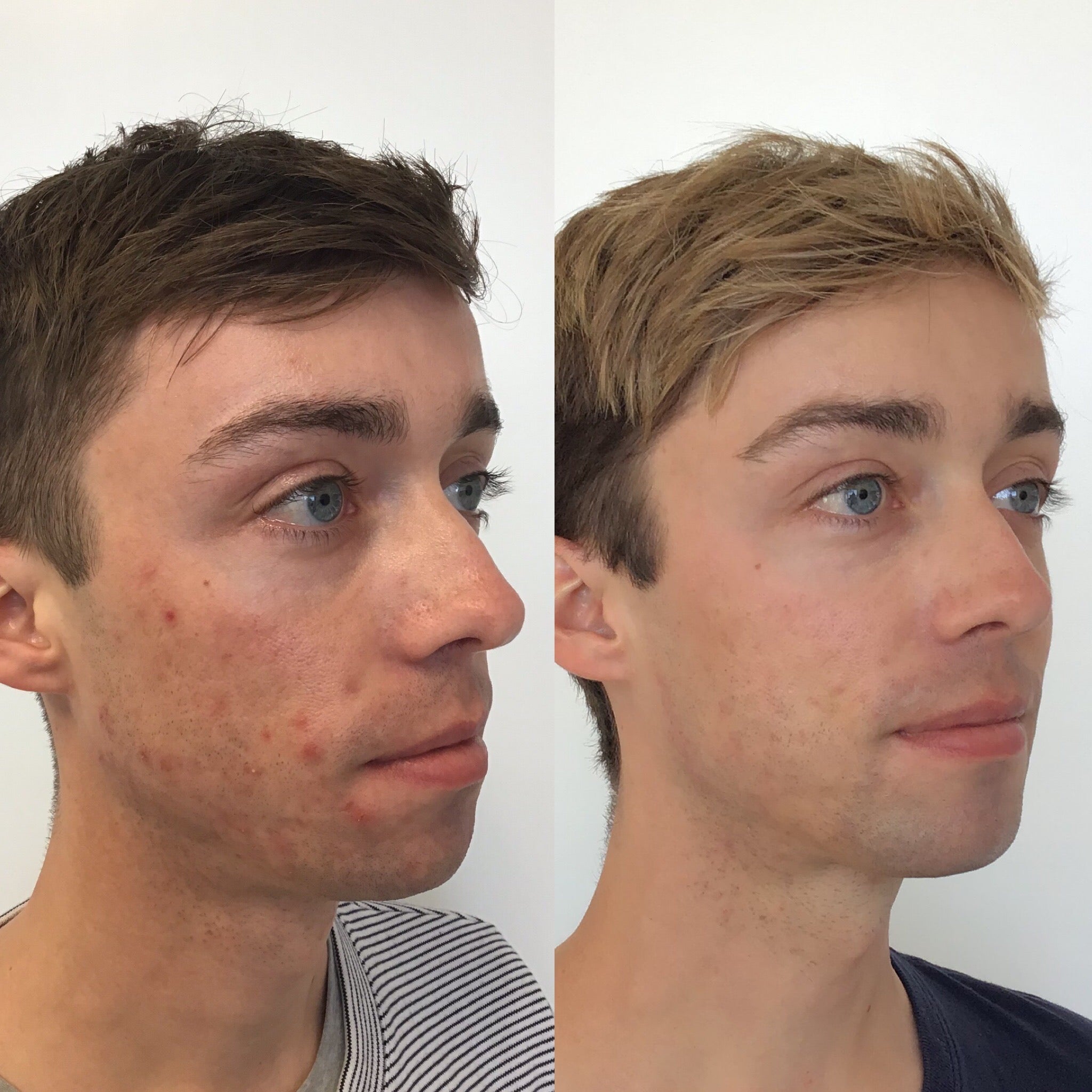Wondering how to use tretinoin for acne or signs of aging? This dermatologist guide will help you create the perfect tretinoin routine to reduce breakouts, fade dark spots, and reverse sun damage.
What is Tretinoin?
Tretinoin, also known as all-trans retinoic acid, is one of the most researched and dermatologist-recommended topical retinoids available. It is clinically proven to:
✅ Treat and prevent acne
✅ Reverse signs of skin aging
✅ Fade pigmentation and dark spots
✅ Repair sun-damaged skin
✅ Improve post-inflammatory hyperpigmentation (PIH)
Tretinoin is a prescription strength retinoid. Topical retinoids, including tretinoin, remain the cornerstone for acne and photoaging management due to their ability to normalize the way our skin turns over and sheds (also known as desquamation) and stimulate collagen synthesis. Collagen is an essential building block of our skin that keeps it looking youthful and healthy.
How Does Tretinoin Work?
Tretinoin works at the cellular level to:
-
Increase skin cell turnover, preventing clogged pores
-
Boost collagen production, reducing fine lines and wrinkles
-
Disperse melanin, fading dark spots and evening skin tone
-
Repair photodamage, smoothing rough texture and sun spots
With consistent use, tretinoin or other prescription strength retinoids like tazorac can transform your skin's appearance and health.
Tretinoin for Acne
Acne is one of the most common reasons patients start a retinoid like tretinoin.
Benefits include:
-
Unclogs pores and prevents new breakouts
-
Reduces existing inflammatory and non-inflammatory acne
-
Diminishes acne-related pigmentation and scars
A landmark study showed significant acne improvement within 12 weeks of consistent tretinoin use. Consistency is key to see improvement with retinoids like tretinoin.
Once the acne improves, do not stop your tretinoin. The tretinoin is reprogramming the way your skin normally behaves. If you take the signal away, your skin will go back to behaving badly and the acne will just return.
Tretinoin for Anti-Aging and Sun Damage
Tretinoin is the gold standard in anti-aging skincare.
Proven anti-aging benefits:
-
Softens fine lines and wrinkles
-
Improves skin texture and elasticity
-
Fades sun spots and uneven pigmentation
-
Stimulates collagen for firmer skin
Studies show that long-term tretinoin use significantly improves photoaged skin, including fine wrinkles and hyperpigmentation.
Tretinoin for Pigmentation and PIH (Post-Inflammatory Hyperpigmentation)
Tretinoin plays a key role in managing pigmentation concerns:
-
Fades dark spots and melasma when combined with other ingredients
-
Reduces PIH from acne, eczema, and other skin injuries
-
Prevents new pigment formation with long-term use
Studies how that tretinoin aids in the resolution of hyperpigmentation by accelerating the turnover of the top layer of skin and spreading out the pigment in our skin.
How to Use Tretinoin: Step-by-Step Routine
Correct use is essential to maximize benefits and minimize irritation:
Step 1: Cleanse and Dry
-
Wash your face with a gentle cleanser.
-
Wait 20-30 minutes until skin is fully dry to reduce irritation.
Step 2: Apply a Pea-Sized Amount
-
Dot tretinoin evenly across the face (forehead, cheeks, chin).
-
Avoid sensitive areas (corners of mouth, eyes, nostrils).
Step 3: Follow with Moisturizer
-
Use a hydrating, non-comedogenic moisturizer to buffer and prevent dryness.
Step 4: Use Sunscreen Daily
-
Apply SPF 30 or higher every morning.
-
Tretinoin makes skin more sensitive to UV rays.
Pro Tips
-
Start using tretinoin every other night.
-
Increase to nightly use as tolerated.
-
Expect initial dryness or peeling (this is temporary).
Frequently Asked Questions (FAQ)
How long does tretinoin take to work for acne and pigmentation?
-
Results typically appear within 8-12 weeks, with continued improvements for pigmentation and anti-aging benefits after 6 months.
Can tretinoin be used long term?
-
Yes. Studies show it is safe and effective when used for years under dermatologist supervision.
Is tretinoin good for hyperpigmentation?
-
Yes. Tretinoin is clinically proven to fade dark spots and PIH by promoting skin turnover and inhibiting melanin formation.
Consult a Board-Certified Dermatologist for Personalized Tretinoin Plans
Tretinoin is a powerful tool in achieving clear, youthful, even-toned skin.
However, to avoid irritation and get optimal results, treatment should be tailored to your skin type and goals.
At CCMD Dermatology, our expert dermatologist Dr. Caren Campbell MD, FAAD in San Francisco, CA specializes in creating customized tretinoin regimens for:
-
Acne and blemish-prone skin
-
Anti-aging and photoaging repair
-
Pigmentation and post-acne dark spots
Schedule your consultation today to start your tretinoin journey with expert guidance.
References
-
Zaenglein AL, Pathy AL, Schlosser BJ, et al. Guidelines of care for the management of acne vulgaris. J Am Acad Dermatol. 2016;74(5):945-973.e33. doi:10.1016/j.jaad.2015.12.037
-
Kligman AM, Grove GL, Hirose R, Leyden JJ. Topical tretinoin for photoaged skin. J Am Acad Dermatol. 1986;15(4 Pt 2):836-859. doi:10.1016/s0190-9622(86)70107-2
-
Kang S, Voorhees JJ. Photoaging therapy with topical tretinoin: an evidence-based analysis. J Am Acad Dermatol. 1998;39(2 Pt 3):S55-61. doi:10.1016/s0190-9622(98)70446-3
